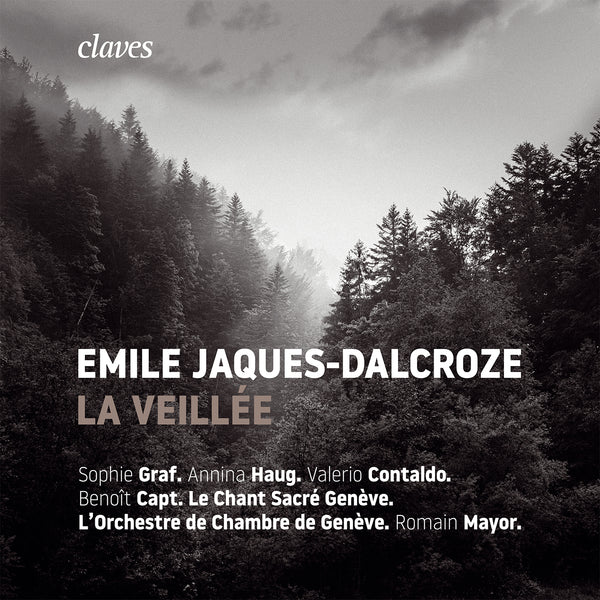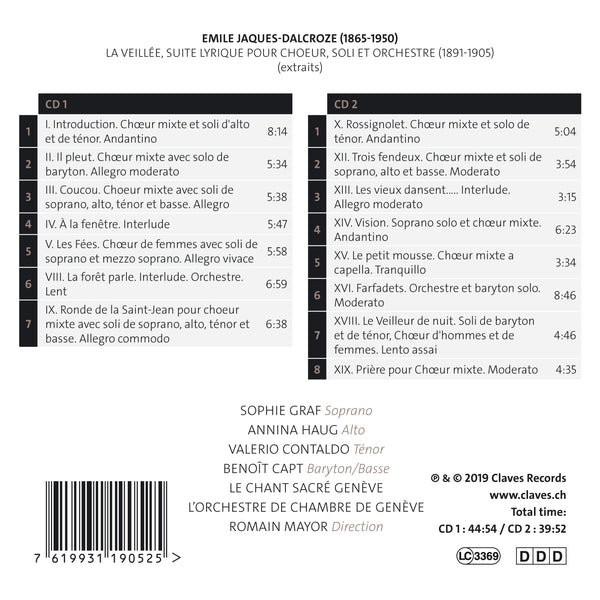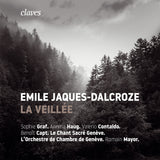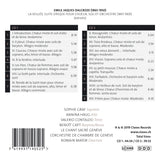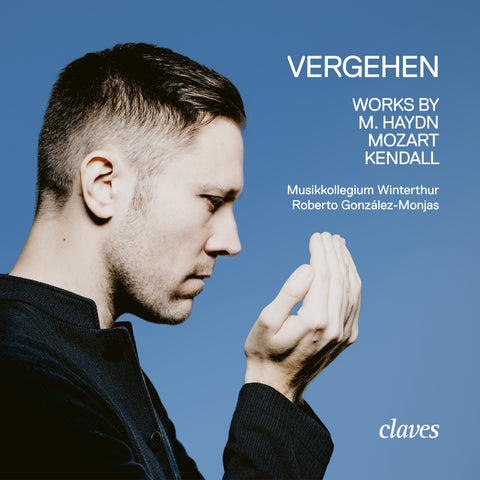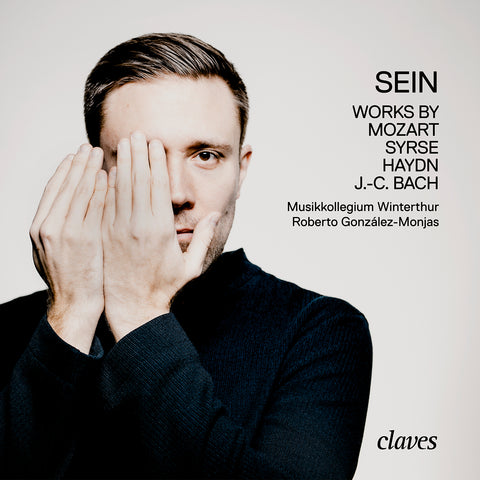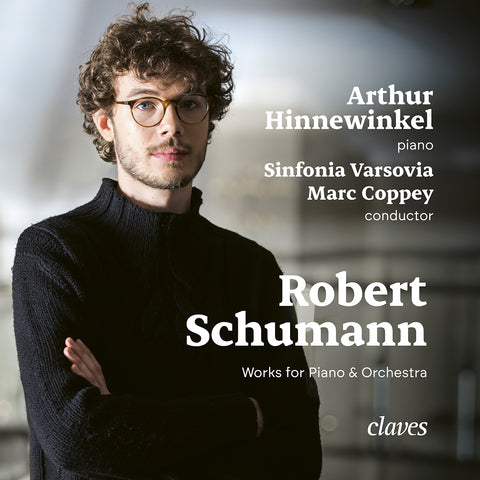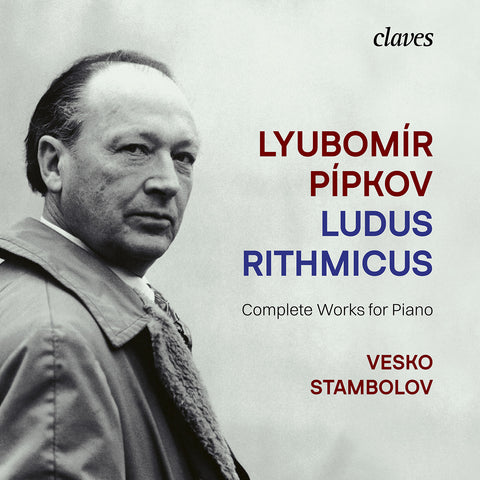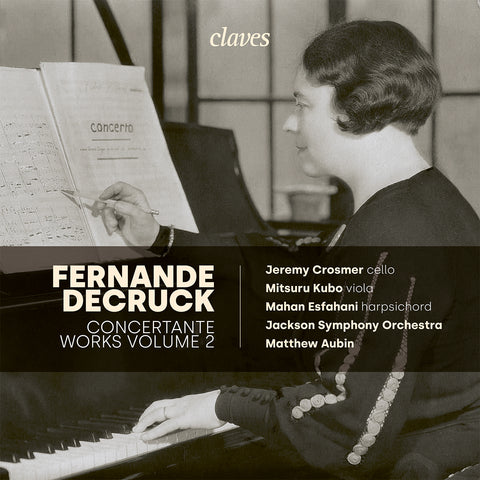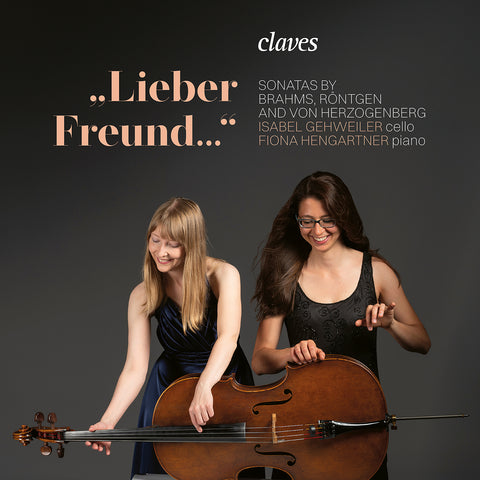(2019) Emile Jaques-Dalcroze: La Veillée
Category(ies): Oper vocal Orchestra
Vocal(s): Alto Soprano Tenor
Main Composer: Emile Jaques-Dalcroze
Orchestra: L'Orchestre de Chambre de Genève
Conductor: Romain Mayor
CD set: 2
Catalog N°:
CD 1905/06
Release: 06.12.2019
EAN/UPC: 7619931190525
This album is now on repressing. Pre-order it at a special price now.
CHF 24.00
This album is no longer available on CD.
This album has not been released yet. Pre-order it from now.
CHF 24.00
This album is no longer available on CD.
CHF 24.00
VAT included for Switzerland & UE
Free shipping
This album is no longer available on CD.
VAT included for Switzerland & UE
Free shipping
This album is now on repressing. Pre-order it at a special price now.
CHF 24.00
This album is no longer available on CD.
This album has not been released yet.
Pre-order it at a special price now.
CHF 24.00
This album is no longer available on CD.
CHF 24.00
This album is no longer available on CD.
EMILE JAQUES-DALCROZE: LA VEILLÉE
FRENCH
EMILE ET LA VEILLÉE, UN CONTE DE FÉES !
La Veillée occupait une place particulière dans le coeur de son auteur. En effet son histoire, commencée comme un cauchemar, se poursuit comme un conte de fées... Sollicité un soir par la Société de chant du Conservatoire pour remplacer au pied levé le chef d’orchestre d’un concert dont il ne connaissait évidemment pas la partition, le jeune Emile s’exécuta le lendemain avec un trac fou, raconte sa soeur Hélène, mais Dieu merci à la satisfaction générale. À la suite de quoi lui parvint une lettre d’ardente reconnaissance, ajoutant que la Société s’engageait à jouer la prochaine oeuvre de son sauveteur, qui en fut «si ravi, qu’il se mit avec joie au travail.»
Résultat, la création de La Veillée (première version) eut lieu le 25 janvier 1893 à Genève, non sans produire apparemment certains effets inattendus, nous dit Alfred Berchtold dans sa biographie «Emile Jaques-Dalcroze et son temps»*: “Faut-il situer ici déjà, ou plus tard, un charmant incident raconté par le maître ? A la répétition générale, les musiciens d’orchestre se montraient mal disposés; une voix claire se fit entendre, qui domina le tumulte. C’était celle d’une toute jeune fille [...] qui s’écria: «Messieurs, songez que c’est l’oeuvre d’un jeune confrère; vous lui devez votre aide […].»” Le petit discours eut un effet immédiat et quelques années plus tard, le 26 décembre 1899, l’héroïne de cette répétition, Nina Faliero, allait, à vingt-deux ans, épouser Emile Jaques-Dalcroze.
La famille Jaques-Dalcroze remercie aussi avec joie Le Chant Sacré Genève et L’Orchestre de Chambre de Genève, ainsi que tou·te·s leurs interprètes, d’avoir réveillé La Veillée et de la partager avec tous.
Martine Jaques-Dalcroze
Fondation Emile Jaques-Dalcroze
* (Editions L’Âge d’Homme)
***
LE CHANT SACRÉ GENÈVE
Selon une tradition orale, la Société de chant sacré aurait été constituée au cours de l’hiver 1826-1827 à l’ombre de la Cathédrale Saint-Pierre, dans les salons d’une respectable dame anglaise très attachée à Genève et très bonne musicienne. Le petit groupe d’origine souhaitait «contribuer à l’édification du service divin» en améliorant la qualité du chant des psaumes, tout en cherchant à se développer sur le plan artistique.
Dès 1855, le nouveau règlement de la Société précise que son but est de «répandre et entretenir le goût de la musique sacrée par l’étude et l’exécution des compositions religieuses des grands maîtres». Durant tout le XIXème siècle, la Société a conservé son caractère «religieux» d’origine. Dès le début du XXème siècle, la Société s’est progressivement détachée des liens qui la reliaient à l’Église pour devenir une institution à vocation purement artistique, osant même désormais s’aventurer vers le répertoire profane. Elle a joué un rôle de précurseur dans la vie culturelle genevoise, en préparant des programmes originaux : tout en présentant régulièrement les grandes oeuvres chorales classiques, elle s’est attachée à faire connaître et apprécier de son public soit des oeuvres anciennes rarement exécutées, soit des oeuvres contemporaines souvent données en création, comme par exemple Golgotha de Frank Martin en 1949, ou plus récemment le Magnificat de Valentin Villard en 2014.
Le choeur est dirigé depuis septembre 2011 par Romain Mayor. En 2012, La Société de chant sacré de Genève est devenue Le Chant Sacré Genève.
Sophie Graf, Soprano
Annina Haug, Alto
Valério Contaldo, Tenor
Benoît Capt, Baryton / Basse
Photo de couverture: Patrice Schreyer
ENGLISH
EMILE AND LA VEILLÉE, A FAIRYTALE !
La Veillée was very dear to its author’s heart. Indeed, it started off as a nightmare and developed into a fairytale…Called upon one evening by the Société de chant du Conservatoire to stand in at the last minute for the conductor of a concert for which he obviously did not know the score, young Emile obliged the following day, feeling extremely nervous, according to his sister Hélène, but thankfully to everyone’s satisfaction. There followed a letter of heartfelt gratitude, adding that the Société committed itself to playing the next work of its saviour, who was “so delighted that he set to work with great joy.”
As a result, the creation of La Veillée (first version) took place on 25th January 1893 in Geneva, not without some apparently unexpected effects, according to Alfred Berchtold in his biography “Emile Jaques- Dalcroze et son temps”*: “Should we mention here or later a charming incident told by the maestro?” At the dress rehearsal, the orchestra players were not well inclined; a crystalline voice was heard above the turmoil, it was that of a young girl [...] who cried: “Gentlemen, consider that this is the work of a young colleague; you owe him your help [...]”. The short speech immediately had effect, and, several years later, on 26th December 1899, the heroine of this rehearsal, Nina Faliero, was to marry Emile Jaques-Dalcroze, at the age of twenty-two.
The Jaques-Dalcroze family also gratefully thanks Le Chant Sacré Genève and L’Orchestre de Chambre de Genève, as well as all their interpreters, for having woken La Veillée from its sleep and for sharing it with everyone.
Martine Jaques-Dalcroze
Fondation Emile Jaques-Dalcroze
* (Editions L’Âge d’Homme)
***
LE CHANT SACRÉ GENÈVE
According to oral tradition, the Société de chant sacré is said to have been founded during the winter of 1826- 1827 in the shade of Saint-Pierre Cathedral, in the salons of a respectable English lady who was very attached to Geneva and also an excellent musician. The original group wanted to “contribute to the edification of the divine service” by improving the quality of psalm singing whilst seeking to develop itself artistically.
From 1855, the new regulations of the Société states that its aim is to “spread and maintain the taste for sacred music through studying and performing religious compositions by the Great Masters”. Throughout the XIXth century, the Société retained its original “religious” nature.
From the beginning of the XXth century, the Société progressively detached itself from the bonds that linked it to the Church, to become an institution with a purely artistic vocation, even venturing into the secular repertoire. It was a forerunner in Genevese cultural life, creating original programmes: whilst regularly performing the great classical choral pieces, it committed itself to making works known to and appreciated by its audience, such as rarely given Early Music, or contemporary works that they often first-performed, such as Frank Martin’s Golgotha in 1949, or more recently Valentin Villard’s Magnificat in 2014.
Romain Mayor has conducted the choir since September 2011. In 2012, “La Société de chant sacré de Genève” became “Le Chant Sacré Genève”.
Sophie Graf, Soprano
Annina Haug, Alto
Valério Contaldo, Tenor
Benoît Capt, Baryton / Basse
Cover photo: Patrice Schreyer
MORE INFO
CHANTEURS ET DISTRIBUTIONS
(2019) Emile Jaques-Dalcroze: La Veillée - CD 1905/06
FRENCH
EMILE ET LA VEILLÉE, UN CONTE DE FÉES !
La Veillée occupait une place particulière dans le coeur de son auteur. En effet son histoire, commencée comme un cauchemar, se poursuit comme un conte de fées... Sollicité un soir par la Société de chant du Conservatoire pour remplacer au pied levé le chef d’orchestre d’un concert dont il ne connaissait évidemment pas la partition, le jeune Emile s’exécuta le lendemain avec un trac fou, raconte sa soeur Hélène, mais Dieu merci à la satisfaction générale. À la suite de quoi lui parvint une lettre d’ardente reconnaissance, ajoutant que la Société s’engageait à jouer la prochaine oeuvre de son sauveteur, qui en fut «si ravi, qu’il se mit avec joie au travail.»
Résultat, la création de La Veillée (première version) eut lieu le 25 janvier 1893 à Genève, non sans produire apparemment certains effets inattendus, nous dit Alfred Berchtold dans sa biographie «Emile Jaques-Dalcroze et son temps»*: “Faut-il situer ici déjà, ou plus tard, un charmant incident raconté par le maître ? A la répétition générale, les musiciens d’orchestre se montraient mal disposés; une voix claire se fit entendre, qui domina le tumulte. C’était celle d’une toute jeune fille [...] qui s’écria: «Messieurs, songez que c’est l’oeuvre d’un jeune confrère; vous lui devez votre aide […].»” Le petit discours eut un effet immédiat et quelques années plus tard, le 26 décembre 1899, l’héroïne de cette répétition, Nina Faliero, allait, à vingt-deux ans, épouser Emile Jaques-Dalcroze.
La famille Jaques-Dalcroze remercie aussi avec joie Le Chant Sacré Genève et L’Orchestre de Chambre de Genève, ainsi que tou·te·s leurs interprètes, d’avoir réveillé La Veillée et de la partager avec tous.
Martine Jaques-Dalcroze
Fondation Emile Jaques-Dalcroze
* (Editions L’Âge d’Homme)
***
LE CHANT SACRÉ GENÈVE
Selon une tradition orale, la Société de chant sacré aurait été constituée au cours de l’hiver 1826-1827 à l’ombre de la Cathédrale Saint-Pierre, dans les salons d’une respectable dame anglaise très attachée à Genève et très bonne musicienne. Le petit groupe d’origine souhaitait «contribuer à l’édification du service divin» en améliorant la qualité du chant des psaumes, tout en cherchant à se développer sur le plan artistique.
Dès 1855, le nouveau règlement de la Société précise que son but est de «répandre et entretenir le goût de la musique sacrée par l’étude et l’exécution des compositions religieuses des grands maîtres». Durant tout le XIXème siècle, la Société a conservé son caractère «religieux» d’origine. Dès le début du XXème siècle, la Société s’est progressivement détachée des liens qui la reliaient à l’Église pour devenir une institution à vocation purement artistique, osant même désormais s’aventurer vers le répertoire profane. Elle a joué un rôle de précurseur dans la vie culturelle genevoise, en préparant des programmes originaux : tout en présentant régulièrement les grandes oeuvres chorales classiques, elle s’est attachée à faire connaître et apprécier de son public soit des oeuvres anciennes rarement exécutées, soit des oeuvres contemporaines souvent données en création, comme par exemple Golgotha de Frank Martin en 1949, ou plus récemment le Magnificat de Valentin Villard en 2014.
Le choeur est dirigé depuis septembre 2011 par Romain Mayor. En 2012, La Société de chant sacré de Genève est devenue Le Chant Sacré Genève.
Sophie Graf, Soprano
Annina Haug, Alto
Valério Contaldo, Tenor
Benoît Capt, Baryton / Basse
Photo de couverture: Patrice Schreyer
ENGLISH
EMILE AND LA VEILLÉE, A FAIRYTALE !
La Veillée was very dear to its author’s heart. Indeed, it started off as a nightmare and developed into a fairytale…Called upon one evening by the Société de chant du Conservatoire to stand in at the last minute for the conductor of a concert for which he obviously did not know the score, young Emile obliged the following day, feeling extremely nervous, according to his sister Hélène, but thankfully to everyone’s satisfaction. There followed a letter of heartfelt gratitude, adding that the Société committed itself to playing the next work of its saviour, who was “so delighted that he set to work with great joy.”
As a result, the creation of La Veillée (first version) took place on 25th January 1893 in Geneva, not without some apparently unexpected effects, according to Alfred Berchtold in his biography “Emile Jaques- Dalcroze et son temps”*: “Should we mention here or later a charming incident told by the maestro?” At the dress rehearsal, the orchestra players were not well inclined; a crystalline voice was heard above the turmoil, it was that of a young girl [...] who cried: “Gentlemen, consider that this is the work of a young colleague; you owe him your help [...]”. The short speech immediately had effect, and, several years later, on 26th December 1899, the heroine of this rehearsal, Nina Faliero, was to marry Emile Jaques-Dalcroze, at the age of twenty-two.
The Jaques-Dalcroze family also gratefully thanks Le Chant Sacré Genève and L’Orchestre de Chambre de Genève, as well as all their interpreters, for having woken La Veillée from its sleep and for sharing it with everyone.
Martine Jaques-Dalcroze
Fondation Emile Jaques-Dalcroze
* (Editions L’Âge d’Homme)
***
LE CHANT SACRÉ GENÈVE
According to oral tradition, the Société de chant sacré is said to have been founded during the winter of 1826- 1827 in the shade of Saint-Pierre Cathedral, in the salons of a respectable English lady who was very attached to Geneva and also an excellent musician. The original group wanted to “contribute to the edification of the divine service” by improving the quality of psalm singing whilst seeking to develop itself artistically.
From 1855, the new regulations of the Société states that its aim is to “spread and maintain the taste for sacred music through studying and performing religious compositions by the Great Masters”. Throughout the XIXth century, the Société retained its original “religious” nature.
From the beginning of the XXth century, the Société progressively detached itself from the bonds that linked it to the Church, to become an institution with a purely artistic vocation, even venturing into the secular repertoire. It was a forerunner in Genevese cultural life, creating original programmes: whilst regularly performing the great classical choral pieces, it committed itself to making works known to and appreciated by its audience, such as rarely given Early Music, or contemporary works that they often first-performed, such as Frank Martin’s Golgotha in 1949, or more recently Valentin Villard’s Magnificat in 2014.
Romain Mayor has conducted the choir since September 2011. In 2012, “La Société de chant sacré de Genève” became “Le Chant Sacré Genève”.
Sophie Graf, Soprano
Annina Haug, Alto
Valério Contaldo, Tenor
Benoît Capt, Baryton / Basse
Cover photo: Patrice Schreyer
MORE INFO
CHANTEURS ET DISTRIBUTIONS
Return to the album | Read the booklet | Composer(s): Emile Jaques-Dalcroze | Main Artist: Le Chant Sacré Genève







